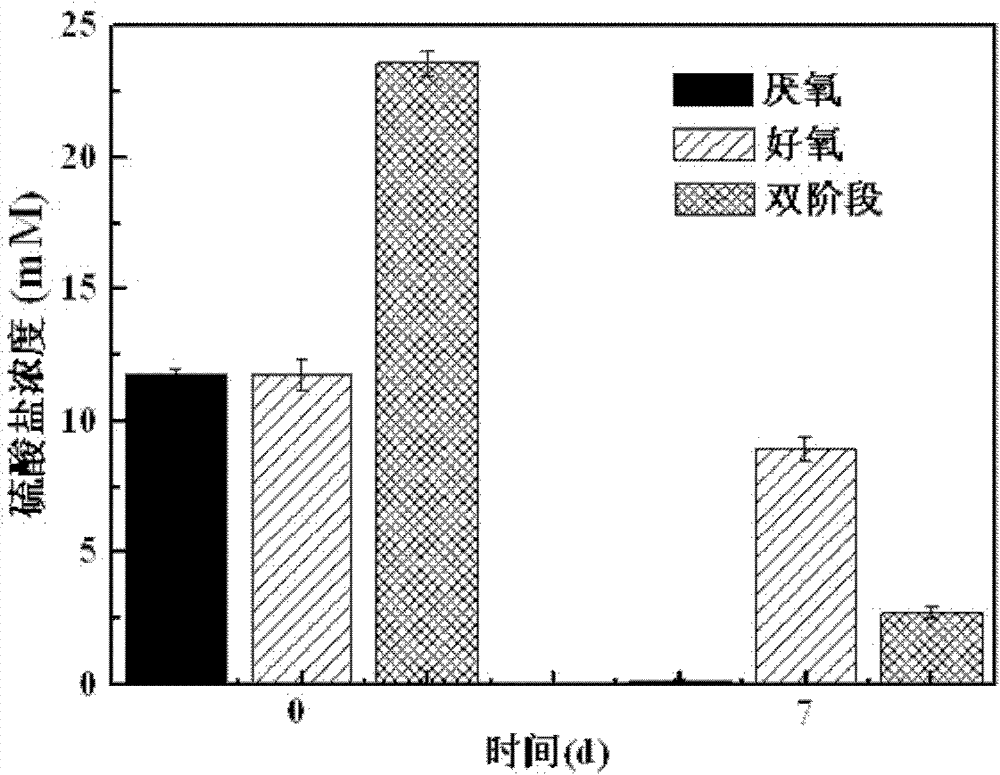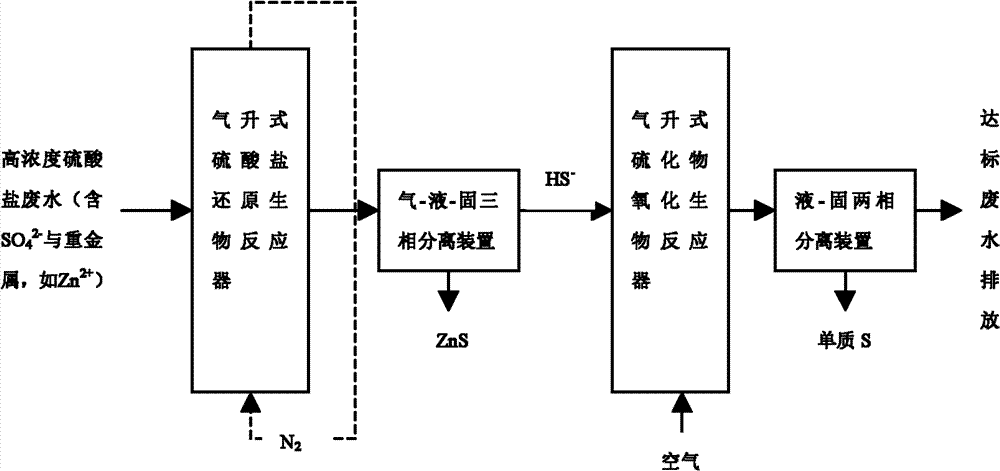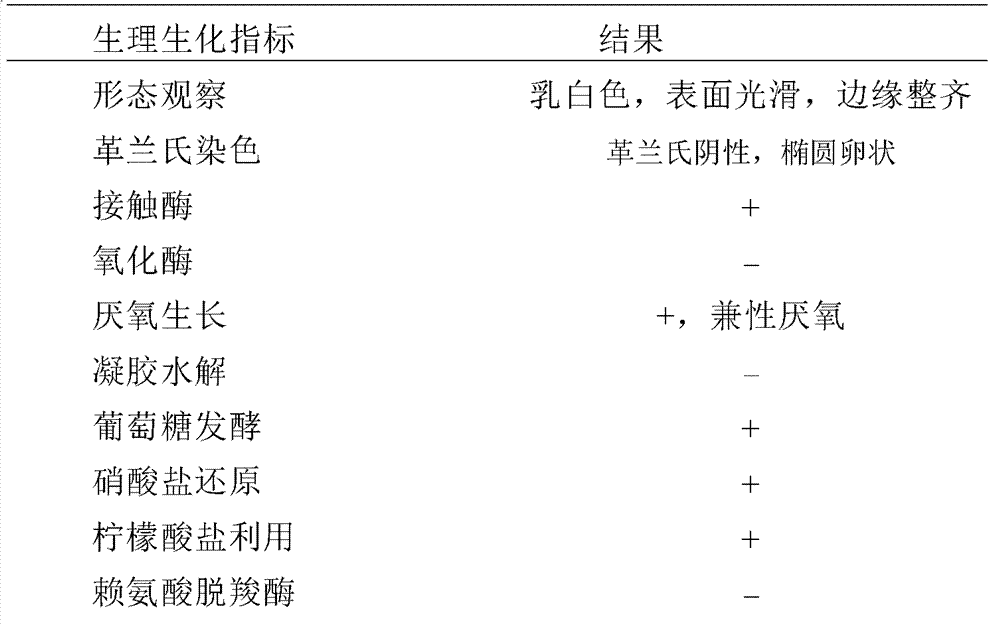Sulfate reducing Citrobacter sp.strain HCSR and use thereof
A technology of Citrobacter bacillus and sulfate, applied in the field of microorganisms, can solve the problems of relatively strict sewage treatment process requirements and low bacterial concentration, and achieve the effects of improving sulfate removal capacity, rapid growth, and reducing the difficulty of treatment process.
- Summary
- Abstract
- Description
- Claims
- Application Information
AI Technical Summary
Problems solved by technology
Method used
Image
Examples
Embodiment 1
[0018] The screening of embodiment 1 high-efficiency Citrobacter desulfurum
[0019] 1. The sample was taken from the sludge of papermaking wastewater outfall of Tianjin Paper Mill. After the sample was precipitated for 48 hours, the supernatant was taken and inserted into SRB separation and purification medium with 1% (separation and purification medium: MgCl 2 ·6H 2 O 0.4g, NH 4 Cl 1.0g, Na 2 SO 4 3.0g, Yeast extracts 1.0g, K 2 HPO 4 0.5g, CaCl 2 2H 2 O 0.05g, sodium lactate 3.0g, vitamin C (10g / L) 10mL, FeSO 4 (5g / L) 10mL. Add all ingredients to deionized water, dilute to 1L, mix well, heat to boiling, then cool to room temperature, fill with nitrogen 1×10 5 Pa sterilization, pH 7.5. The liquid medium was divided into anaerobic tubes with rubber stoppers under nitrogen and then sealed, and the solid medium was added with 1.5% agar powder. )
[0020] 2. Place in the anaerobic workstation (RUSKINN Bugbox) for enrichment, use ferrous ions as the indicator, spread t...
Embodiment 2
[0021] Physiological and biochemical identification of embodiment 2 Citrobacter HCSR
[0022] A series of character identifications are carried out to the high-efficiency sulfate-reducing bacterial strain obtained in Example 1, and the results are obtained in the following table 1:
[0023] Table 1 Morphological observation and physiological and biochemical identification results of strain HCSR
[0024]
[0025]
[0026] In this example, according to the physiological and biochemical identification method in "Bergey's Bacterial Identification Handbook" (Ninth Edition) (Baltimore: The Williams and Wilkins Co. Baltimore Md Published, May 2004), the physiological and biochemical identification of the bacterial strain HCSR was performed. , it was found that the strain was most consistent with Citrobacter werkmanii.
Embodiment 3
[0027] Example 3 16S rDNA sequence analysis of Citrobacter HCSR
[0028] The total DNA of Citrobacter HCSR cells was extracted, the primers were designed to amplify the 16S rDNA gene, and then sequenced, and the homology data were compared in the NCBI database.
[0029] 16S rDNA gene amplification and PCR product analysis template preparation: absorb an appropriate amount of bacteria and centrifuge, take out the bacteria pellet, and use a genome extraction kit (for genomic DNA extraction methods, please refer to "Bacterial Molecular Genetics Classification and Identification Method" (Shanghai Science and Technology Co., Ltd.) Publishing House, 1990) extract the total DNA of the bacterium, and the fragment size is about 20kbp. The design of the 16S rDNA gene primer adopts general primers, which are provided by Shanghai Sangong Bioengineering Technology Service Co., Ltd. The PCR reaction system is shown in Table 2, and the reaction conditions As shown in Table 3, a negative refe...
PUM
| Property | Measurement | Unit |
|---|---|---|
| diameter | aaaaa | aaaaa |
| width | aaaaa | aaaaa |
| length | aaaaa | aaaaa |
Abstract
Description
Claims
Application Information
 Login to View More
Login to View More - R&D
- Intellectual Property
- Life Sciences
- Materials
- Tech Scout
- Unparalleled Data Quality
- Higher Quality Content
- 60% Fewer Hallucinations
Browse by: Latest US Patents, China's latest patents, Technical Efficacy Thesaurus, Application Domain, Technology Topic, Popular Technical Reports.
© 2025 PatSnap. All rights reserved.Legal|Privacy policy|Modern Slavery Act Transparency Statement|Sitemap|About US| Contact US: help@patsnap.com



